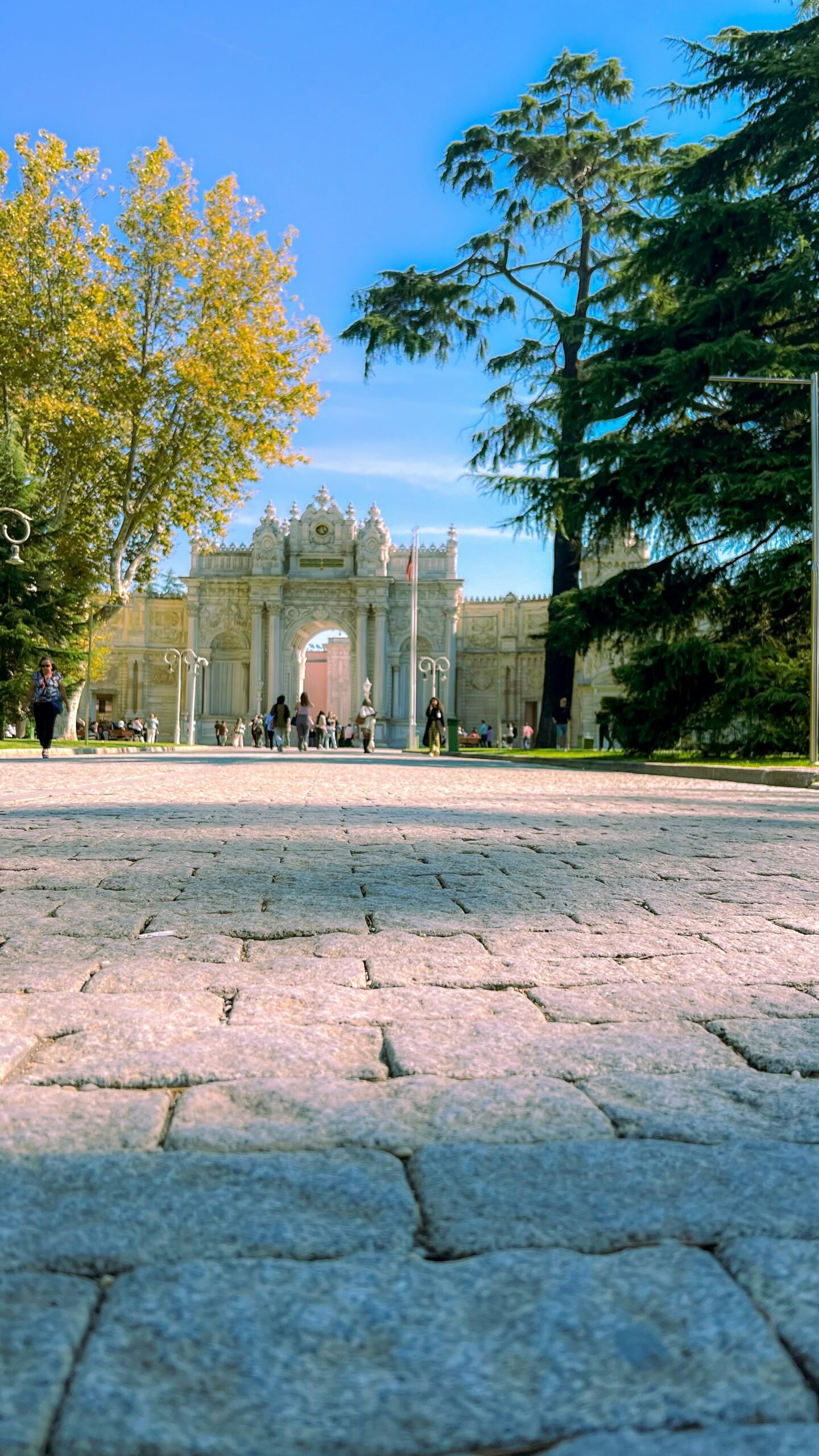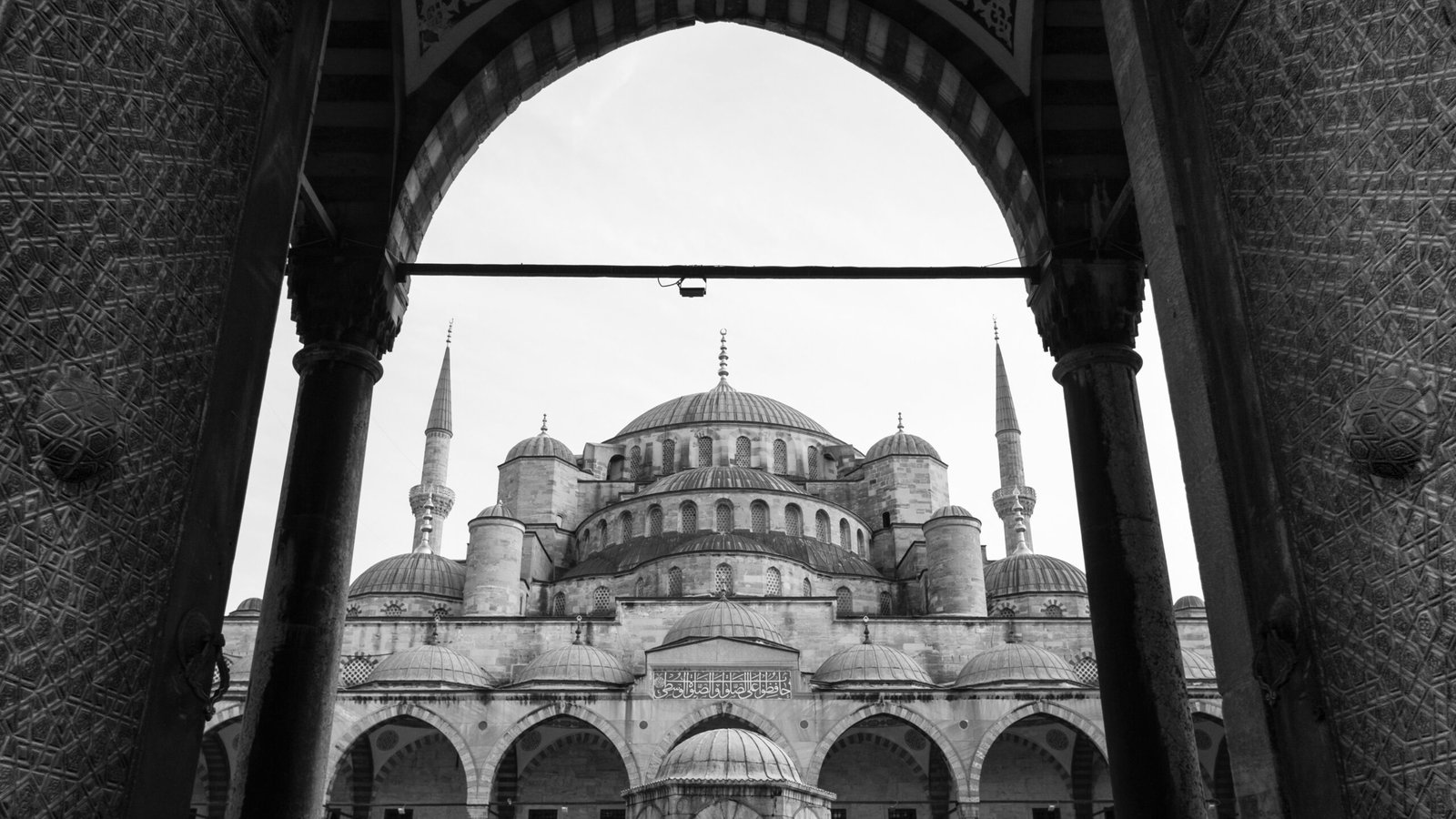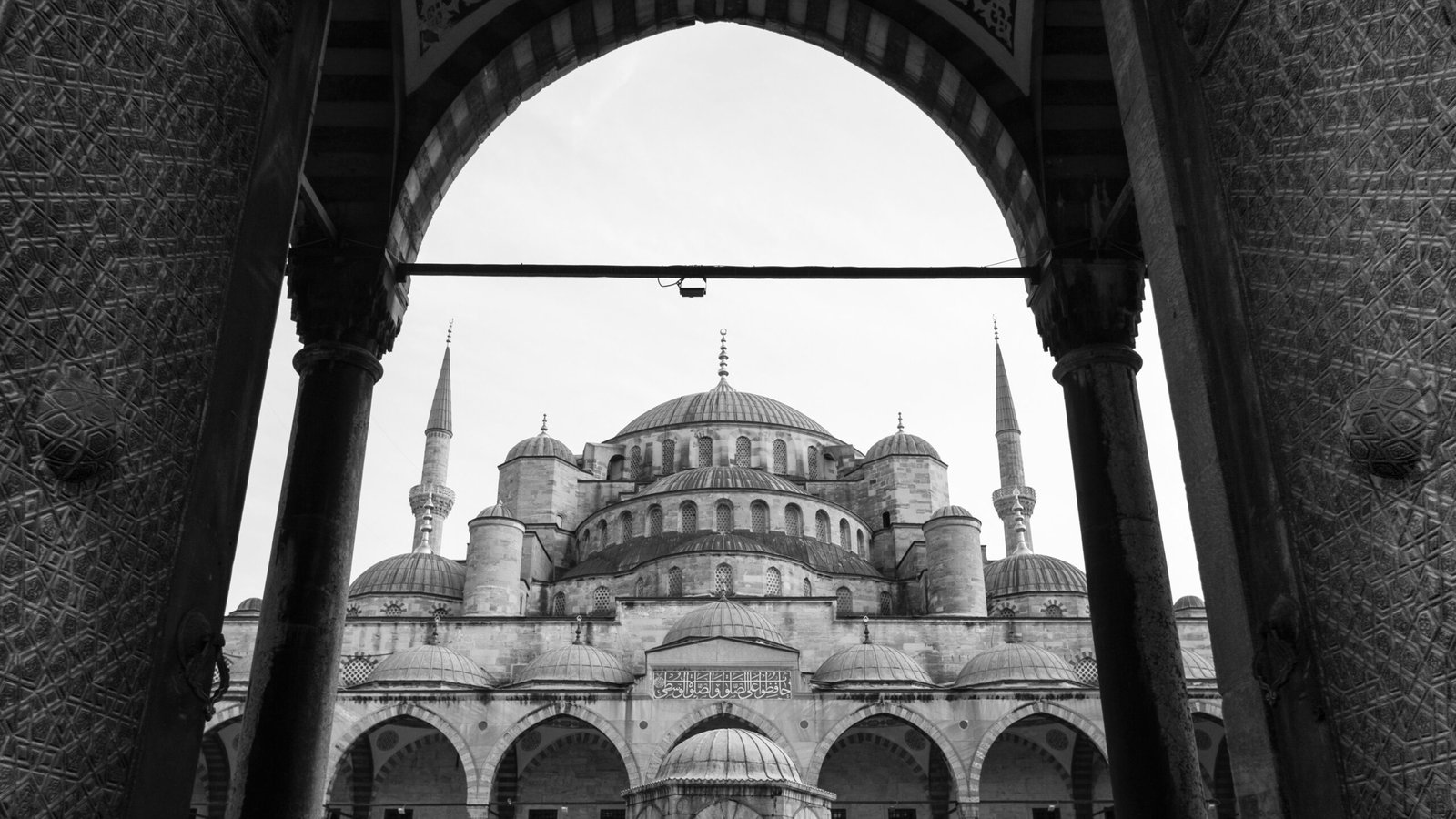Introduction to Istanbul
Istanbul, a captivating city that straddles two continents, is a melting pot of history, culture, and breathtaking landscapes. Situated where Europe meets Asia, Istanbul’s unique geographical location has made it a significant cultural and commercial hub for centuries. This vibrant city, once known as Byzantium and later Constantinople, has been the epicenter of major empires, including the Roman, Byzantine, and Ottoman, each leaving an indelible mark on its architectural and cultural landscape.
The historical significance of Istanbul is reflected in its myriad of monuments and sites, from the majestic Hagia Sophia, which has served as a church, mosque, and now a museum, to the opulent Topkapi Palace, the administrative heart of the Ottoman Empire for nearly 400 years. These landmarks, alongside the bustling Grand Bazaar and the serene Bosphorus Strait, offer a glimpse into the city’s rich and diverse past.
Culturally, Istanbul is a city of contrasts and harmonies, where ancient traditions coexist with modern innovation. The city’s streets are a testament to this blend, where centuries-old mosques and churches stand side by side with contemporary art galleries and chic cafes. This rich tapestry of influences is also evident in the local cuisine, which fuses flavors from the Middle East, Central Asia, and the Mediterranean, creating a gastronomic experience that is both unique and unforgettable.
Istanbul’s position as a bridge between Europe and Asia is not just a geographical fact but also a symbol of its role in connecting diverse cultures and histories. This dynamic city continues to draw visitors from around the world, who come to experience its unique blend of old and new, East and West. As Istanbul evolves, it remains a living museum of its storied past while embracing the future, making it one of the most popular tourist destinations today.
Historical Significance and Heritage Sites
Spanning over millennia, Istanbul’s rich history is a tapestry woven with diverse cultures and epochs. Originally known as Byzantium, the city was founded by Greek settlers in the 7th century BC. It later became Constantinople, the capital of the Roman and Byzantine Empires, before transforming into the heart of the Ottoman Empire. Each era has left an indelible mark on the city, making it a living museum that attracts millions of tourists each year.
The Hagia Sophia stands as a monumental testament to Istanbul’s layered history. Initially constructed as a cathedral in 537 AD under Emperor Justinian I, it was the world’s largest building and an engineering marvel of its time. Following the Ottoman conquest in 1453, it was converted into a mosque, and today, it functions as a museum, drawing visitors with its majestic dome and intricate mosaics that reflect both Christian and Islamic artistry.
Topkapi Palace offers another glimpse into Istanbul’s opulent past. Serving as the primary residence of Ottoman sultans for nearly 400 years, the palace is a sprawling complex that includes courtyards, pavilions, and a harem. Tourists are particularly fascinated by the palace’s treasury, which houses an array of jeweled artifacts, including the famed Topkapi Dagger.
The Basilica Cistern, known locally as Yerebatan Sarnıcı, is an underground marvel that once stored water for the city. Built in the 6th century during the reign of Emperor Justinian I, the cistern’s forest of columns and atmospheric lighting provides a unique experience for visitors. Among its notable features are two Medusa heads used as column bases, which add an element of mystique to the site.
Istanbul’s historical significance and heritage sites are key attractions that offer a window into its storied past. The city’s ability to preserve and celebrate its diverse historical epochs makes it a magnet for tourists seeking both education and inspiration. As such, Istanbul continues to grow in popularity, cementing its status as a premier global tourist destination.
Cultural Diversity and Experiences
Istanbul stands as a testament to cultural diversity, where the confluence of Eastern and Western traditions creates a unique mosaic that captivates visitors. As one traverses the city’s streets, the harmonious blend of Byzantine, Ottoman, and modern influences becomes palpable, reflecting the rich history that defines Istanbul’s identity. This cultural amalgamation is not confined to architectural marvels alone but extends deeply into the vibrant arts scene and everyday life.
The city’s arts scene is a thriving hub for music, dance, and visual arts. Traditional Turkish music and dance forms, such as the mesmerizing Whirling Dervishes, coexist with contemporary art movements, offering a spectrum of experiences for every taste. The Istanbul Biennial, for instance, is a prestigious event that attracts artists and art enthusiasts from around the globe, showcasing avant-garde works that push the boundaries of creativity.
Festivals play a crucial role in Istanbul’s cultural landscape, serving as a magnet for tourists. The Istanbul International Film Festival and the Istanbul Jazz Festival are notable events that draw cinephiles and music lovers from various parts of the world. These festivals not only celebrate global talent but also provide a platform for local artists to shine, fostering a sense of community and cultural exchange.
Furthermore, Istanbul’s culinary scene offers an experiential journey through its diverse cultural heritage. From savoring traditional Turkish delights at bustling bazaars to dining at world-class restaurants that reinterpret classic dishes, the city’s gastronomic offerings are a testament to its rich cultural tapestry.
In essence, Istanbul’s cultural diversity and vibrant arts scene are pivotal to its allure as a tourist destination. The city’s ability to seamlessly blend tradition with modernity, coupled with its plethora of cultural events, makes it an irresistible destination for travelers seeking a rich and immersive cultural experience.
Istanbul’s culinary scene is a vibrant testament to its rich cultural tapestry, offering an array of flavors that captivate both locals and tourists alike. Renowned for its diverse gastronomic offerings, the city’s cuisine seamlessly blends influences from the Middle East, Asia, and Europe, creating a unique and tantalizing experience for the palate. Among the most celebrated dishes are the ubiquitous kebabs, which come in various forms such as the succulent döner, the spicy Adana kebab, and the flavorful shish kebab. These grilled meats are often accompanied by a selection of mezes – small, flavorful appetizers that include dishes like hummus, baba ghanoush, and stuffed grape leaves.
Another hallmark of Istanbul’s culinary landscape is its sweet offerings. Turkish delight, or lokum, is perhaps the most famous, available in a myriad of flavors ranging from rosewater to pomegranate, often studded with pistachios or hazelnuts. Baklava, a rich pastry layered with honey and nuts, is another must-try, particularly from establishments that have been perfecting their recipes for generations.
The city’s bustling markets, such as the historic Grand Bazaar and the vibrant Spice Bazaar, are treasure troves for food enthusiasts. These markets are not only places to purchase spices, dried fruits, and teas but also offer a sensory feast with their colorful displays and aromatic scents. Street food culture in Istanbul is equally vibrant, with vendors offering everything from simit (a sesame-crusted bread) to midye dolma (stuffed mussels) and the iconic fish sandwich, or balık ekmek, fresh from the Bosphorus.
For those seeking a more structured culinary experience, Istanbul boasts a plethora of notable restaurants and food tours. Renowned eateries such as Mikla and Nusr-Et offer refined dining experiences that showcase the best of Turkish cuisine. Additionally, food tours provide an excellent way to explore the city’s culinary heritage, guiding visitors through hidden gems and local favorites.
Shopping and Bazaar Experience
Istanbul offers an unparalleled shopping experience, blending the old with the new in a vibrant setting. The city’s bazaars are legendary, with the Grand Bazaar and Spice Bazaar being the most notable. The Grand Bazaar, one of the oldest and largest covered markets in the world, is a labyrinth of over 4,000 shops. Here, visitors can find a vast array of traditional crafts, such as intricate hand-woven carpets, exquisite jewelry, and finely crafted ceramics. The Spice Bazaar, also known as the Egyptian Bazaar, teems with colorful stalls offering a sensory overload of exotic spices, dried fruits, nuts, and Turkish delights. The aroma alone is enough to draw you in.
Beyond the historic bazaars, Istanbul’s shopping scene extends to modern fashion and contemporary goods. Istiklal Avenue, a bustling pedestrian street, is lined with international brands, trendy boutiques, and chic cafes. For luxury shopping, Nişantaşı and Zorlu Center cater to those seeking high-end fashion and designer labels. Istanbul’s shopping malls, such as Kanyon and Istinye Park, offer a mix of global brands and local designers, ensuring a comprehensive shopping experience.
An intrinsic part of shopping in Istanbul is the art of haggling. In the bazaars, bargaining is not just accepted but expected. It’s a skillful dance between buyer and seller, where the aim is to reach a mutually satisfactory price. This interaction adds a unique cultural layer to the shopping experience, allowing visitors to engage directly with local vendors and gain insights into Turkish commerce traditions.
Whether you’re on the hunt for a unique souvenir, a piece of history, or the latest fashion, Istanbul’s diverse shopping offerings cater to every interest and budget. The city’s blend of traditional markets and modern retail spaces provides a dynamic and enriching shopping experience that is truly unparalleled.
Natural Beauty and Scenic Spots
Istanbul, a city that bridges two continents, is renowned for its breathtaking natural beauty and scenic locations. One of the most iconic natural features is the Bosphorus Strait, a narrow waterway that runs through the heart of the city, separating Europe and Asia. This strait offers stunning views and is best experienced through a Bosphorus cruise. These cruises provide an unparalleled perspective of Istanbul’s skyline, historic palaces, and lush green hills, making it a must-do activity for visitors.
Aside from the Bosphorus, Istanbul is home to numerous parks and gardens that offer a respite from the bustling city life. Gülhane Park, located near the Topkapi Palace, is one such green oasis. It is one of the oldest and largest parks in Istanbul, providing a serene environment for leisurely walks and picnics. Similarly, Yıldız Park, with its extensive flora and fauna, offers panoramic views of the Bosphorus and is a popular spot for both locals and tourists.
For those who seek scenic viewpoints, Istanbul does not disappoint. The Pierre Loti Hill in the Eyüp district provides a stunning vantage point overlooking the Golden Horn. It’s particularly famous for its sunset views, where the sky transforms into a palette of vibrant colors, offering a picturesque setting for photography and contemplation.
Another gem in Istanbul’s natural beauty crown is the Princes’ Islands, a group of nine islands in the Sea of Marmara. These islands are known for their tranquil environment, as motor vehicles are banned, making it an ideal escape from the city’s hustle and bustle. Visitors can explore the islands by bike or horse-drawn carriage, enjoying the pristine beaches and lush landscapes.
In essence, the natural beauty of Istanbul, from the enchanting Bosphorus to the serene parks and scenic viewpoints, plays a significant role in its growing popularity as a top tourist destination. The city’s diverse natural attractions offer a unique blend of relaxation and adventure, catering to a wide range of interests and ensuring a memorable experience for all who visit.
Modern Attractions and Infrastructure
Istanbul, a city where the ancient meets the modern, has made significant strides in enhancing its appeal through contemporary attractions and state-of-the-art infrastructure. This metropolis is not just renowned for its historic sites but is also home to an array of modern museums, galleries, and entertainment venues that cater to diverse tastes and interests.
One of the most notable additions to Istanbul’s cultural landscape is the Istanbul Modern, a contemporary art museum that showcases the works of both Turkish and international artists. The museum’s dynamic exhibitions and educational programs make it a must-visit for art enthusiasts. Similarly, the Pera Museum houses an impressive collection of Orientalist paintings and Anatolian weights and measures, offering a unique glimpse into the region’s artistic heritage.
Entertainment options in Istanbul have also expanded, with venues like Zorlu Center and Istanbul Sapphire offering a mix of shopping, dining, and leisure activities. Zorlu Center, for instance, features a performing arts center that hosts Broadway productions, concerts, and ballets, while Istanbul Sapphire, one of the tallest buildings in Turkey, offers panoramic views of the city from its observation deck.
In terms of infrastructure, Istanbul has made considerable improvements to enhance accessibility and comfort for tourists. The opening of Istanbul Airport, one of the largest in the world, has significantly increased the city’s capacity to handle international flights, making travel more convenient. Public transportation has also seen upgrades, with the expansion of the metro and tram networks, providing efficient and affordable options for navigating the city.
Accommodations in Istanbul have kept pace with these developments, offering a range of options from luxury hotels to budget-friendly hostels. Many of these establishments are strategically located near major attractions and transportation hubs, ensuring that visitors can easily explore the city’s myriad offerings.
Overall, Istanbul’s modern attractions and improved infrastructure have played a crucial role in its rise as a premier tourist destination, blending the vibrancy of contemporary culture with the city’s rich historical legacy.
Conclusion: The Future of Tourism in Istanbul
Istanbul’s ascent as a premier tourist destination can be attributed to a confluence of factors that collectively create a unique and compelling experience for visitors. The city’s historical and cultural richness stands out as a primary draw, with landmarks such as the Hagia Sophia, Topkapi Palace, and the Blue Mosque offering a glimpse into its storied past. These sites, among many others, serve as a testament to Istanbul’s role as a crossroads of civilizations, blending Byzantine, Ottoman, and modern Turkish influences.
Another significant factor is Istanbul’s vibrant culinary scene. The city’s cuisine, which ranges from traditional Turkish dishes to innovative contemporary fare, provides an enticing journey for the palate. Street food vendors, bustling markets, and high-end restaurants collectively contribute to a rich gastronomic landscape that appeals to food enthusiasts from around the globe.
Shopping in Istanbul offers another layer of allure. The city’s markets, such as the Grand Bazaar and Spice Bazaar, present a sensory feast of sights, sounds, and smells, while modern shopping centers provide a cosmopolitan retail experience. This blend of traditional and contemporary shopping options ensures that visitors can find unique souvenirs and luxury goods alike.
Natural beauty also plays a pivotal role in Istanbul’s popularity. The city’s unique position straddling two continents, Europe and Asia, offers stunning vistas along the Bosphorus Strait. Parks, gardens, and waterfront promenades provide serene escapes from the urban hustle, allowing tourists to appreciate the city’s scenic landscapes.
Furthermore, Istanbul’s modern infrastructure, including its extensive transportation network and world-class accommodations, enhances its accessibility and convenience for travelers. Ongoing developments, such as the expansion of Istanbul Airport and improvements to public transit, signal a continued commitment to accommodating an increasing number of visitors.
Looking ahead, the future of tourism in Istanbul appears promising. With its multifaceted appeal and ongoing enhancements to infrastructure, the city is well-positioned to attract even more tourists. However, potential challenges such as ensuring sustainable tourism practices and preserving the city’s cultural heritage will need to be addressed to maintain its standing as a top destination. By balancing growth with conservation, Istanbul can continue to captivate the imaginations of travelers for years to come.









